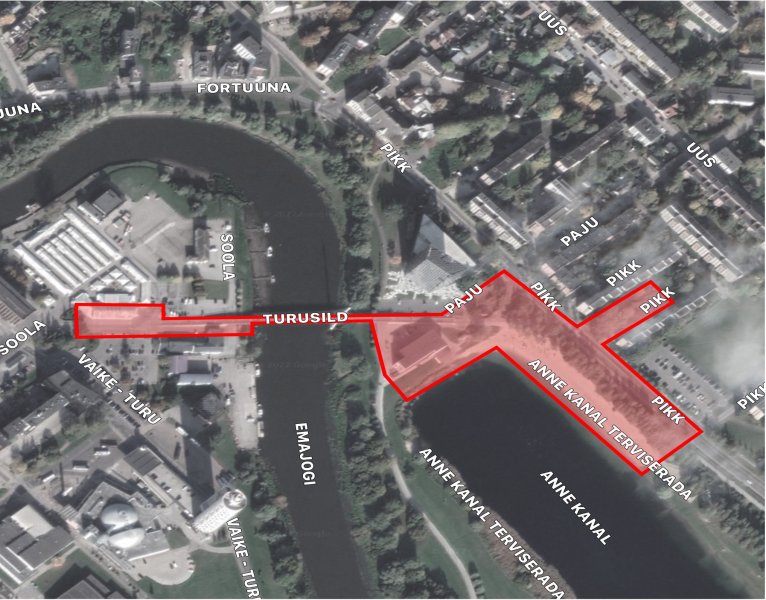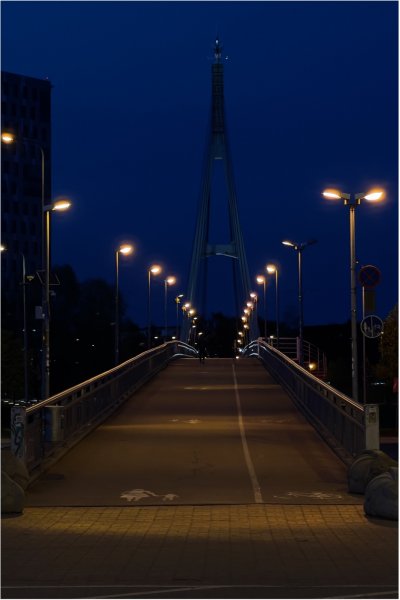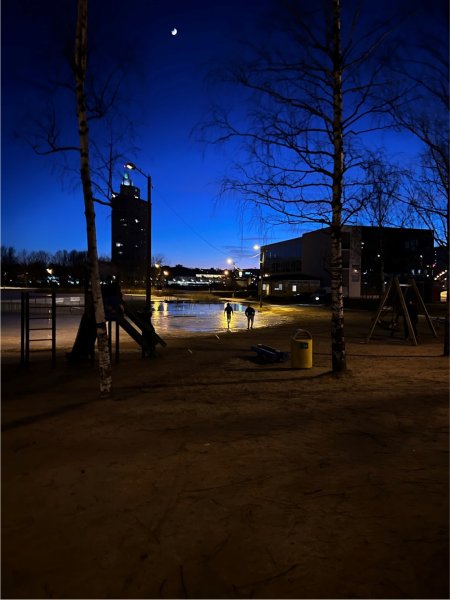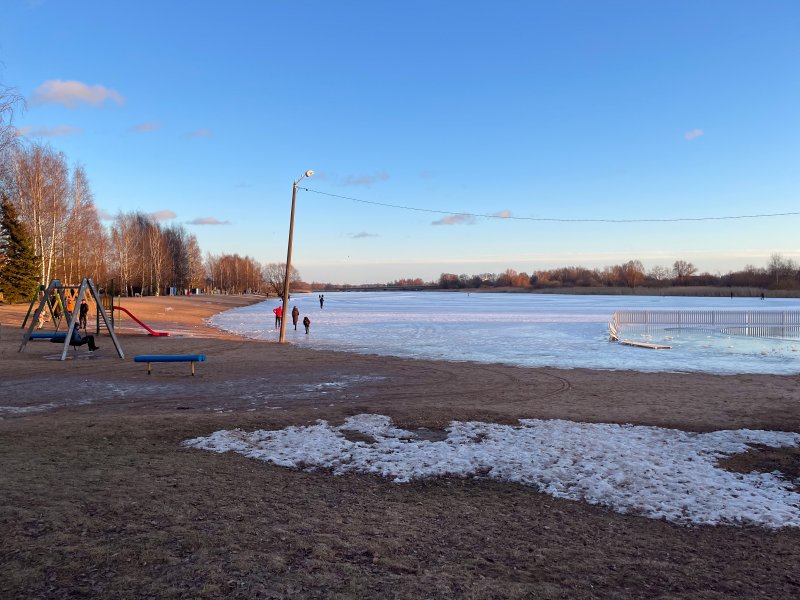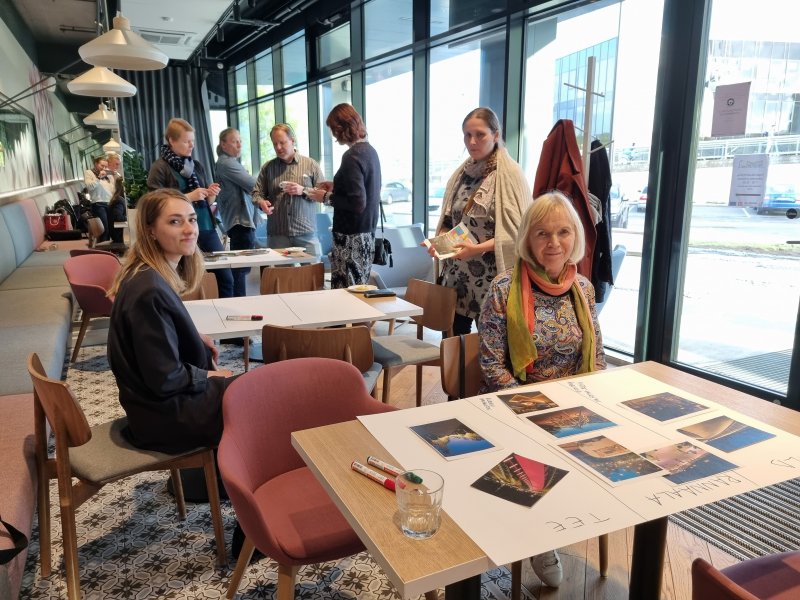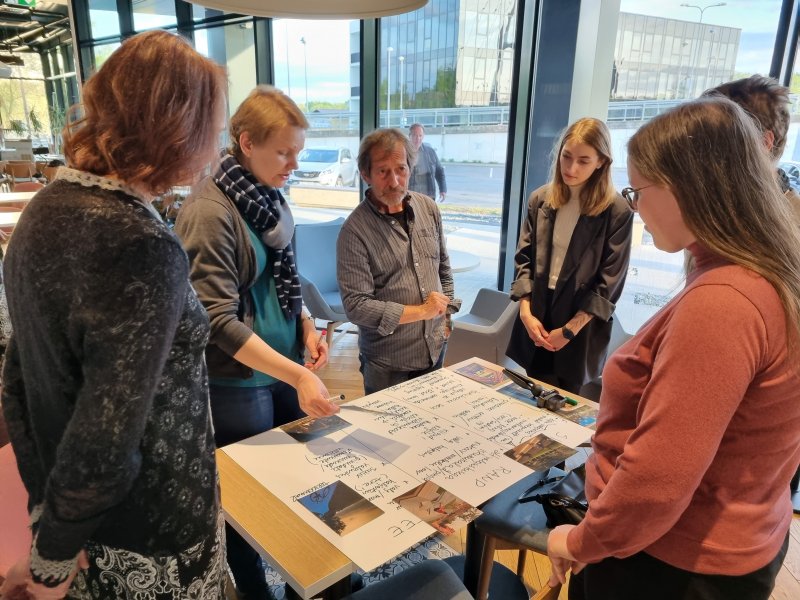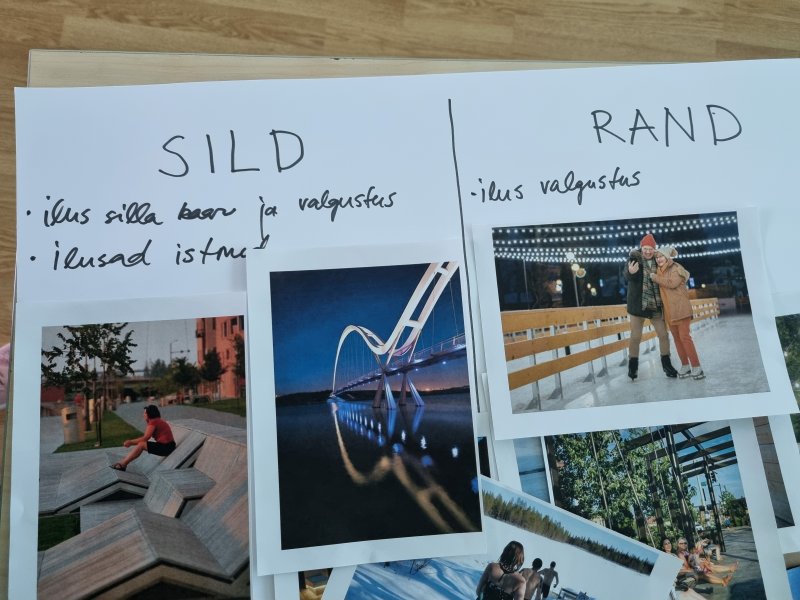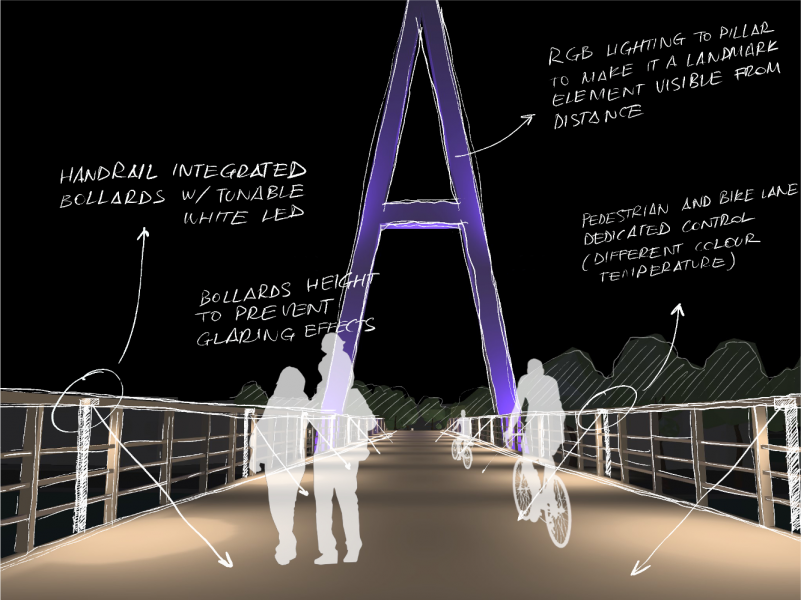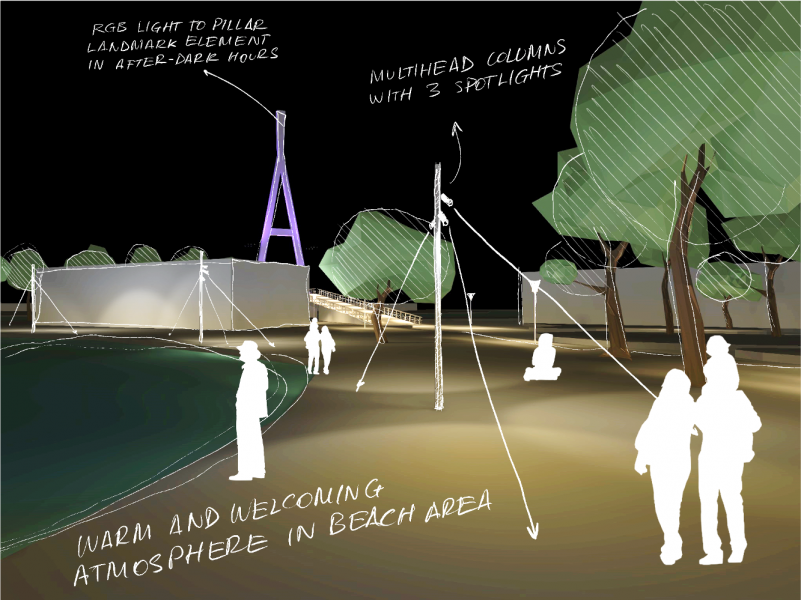
Selected district
Annelinn
Intervention site
Turuslid Bridge and Anne Kanal Rand
- About the district
Tartu Urban Region is the second major economic hub in Estonia but with a long-term reputation as a culture and intellectual centre of the country, largely due to its venerable university. The term-time influx of thousands of students has increased demand for housing, despite an overall declining city population, and is also part of a generally skewed demographic distribution.
The selected target district Annelinn, with a population of 24,551 inhabitants, typifies the majority of the housing stock in Estonia and the city in that it originates from the socialist years, built in the 1970s and 1980s. It is the only fully master-planned Large Housing Estate (LHE) in the city. In Tartu approximately 60% of residents live in LHE dwellings, adding to that some further percentage of households which occupy single apartment buildings in the urban space. The privatisation of formerly state-owned housing was launched in the early 1990s in Estonia and, by the end of the decade, almost all residential units belonged to private homeowners. Since then, the generous public subsidies that were needed to maintain the buildings and public spaces have been withdrawn.
Almost a third of the population of Tartu today lives in Annelinn. The huge demand for student accommodation in the city naturally provides a demand for apartments in Annelinn, making the process of ‘studentification’ and that of aging parallel trends. Annelinn is a modernist housing estate, combining Russian and Estonian speakers. LHEs in Estonian cities tend to be those districts that have lost their former socialist-era reputation as residential destinations. Newly arriving immigrants from Russian-speaking countries mostly find their first place of residence in LHEs, while Estonians with a higher socio-economic status more often leave those same LHEs. This makes LHEs even more Russian-dominated districts over the course of time. In Tartu, where the proportion of Russian-speakers is smaller, the life worlds of these two language groups are somewhat connected and seem to live harmoniously, with few ethnic divisions and problems. In addition, some larger areas of public expenditure and investment have recently been made. In Tartu’s Annelinn district one new, large public children’s playground has been built, in 2014. Investments have been made in order to improve the green areas in these districts, such as forming a riverbank recreation area, or a beach along the Anne Canal, including the new pedestrian/cycling routes. Gradually the city intends to renew street lighting by replacing old street lamps with new, energy-efficient LED-lamps.
Annelinn has always been very well connected to the city centre and other parts of the city by means of public transport.
- About the intervention site
The modernist housing development contains no concentrations of public civic life and few amenities in the large green spaces surrounding the apartment blocks. Similarly, the architecture, the climate and local culture do not provide the social forms that make for gathering, activity and public pedestrian traffic.
The intervention area selected is a multiple use space that is both highly visible and is extensively and routinely used by Annelinn population, including active elderly citizens. Because of its strategic and historic status, the area also evokes rich associations and therefore good participation in co-design discussions and investigations of ageing issues in Annelinn.
The site is located along the Anne Kanal, a man-made body of water that is widely used for swimming in summer and winter, and for ice-based activities in winter. At one end, the Turusild pedestrian bridge, constructed in 2003, crosses the Emajogi river to connect Annelinn first to the extensive public markets on the other side, and more generally to the Karlova District, the city commercial centre, and to the city heritage centre. As a result, Turusild bridge is the main pedestrian and bicycle link between Annelinn and the city. Additionally, the site along the Anne Kanal was developed as a multiple usage site, known as Anne Kanal Rand, called ‘the beach’: the main amenities are a sauna, winter swimming area, a sandy beach/lido, children’s playground, exercise/sports grounds, a river shore path that circles the canal, and a popular kiosk, as well as benches and paths.
The lighting for the case study area in Tartu, is outdated technology in need of an update. There is a great difference between the lighting condition of Annelinn and the adjacent city centre.
The study area is a path leading from the central shopping area to Annelinn, including a street, a public market, a bridge, a beach along the lake and a pedestrian path. The lighting varies in terms of technology, lighting levels and fixture typology. Some of the fixtures are really old and still mounted on wood or concrete columns. The area of the beach is particularly old and not maintained.
Street lighting is generally up to date with LED fixtures. The existing lighting is merely functional and lacks completely of atmosphere, sense of place and does not highlight the context. Furthermore, the lighting does not support all the activities that are happening in the area and does not take into considerations the conflicts between pedestrians, cyclists and car traffic. The lighting on the bridge is brutal and the lighting level high in comparison to the context. The lighting conditions in Tartu varies sensibly from summer to winter due to the large amount of ice and snow at the ground level increasing massively the reflection and therefore the luminance of the area.
- Local structure and culture of ageing
- Sociality in Tartu is characterised by minimal social networking between individuals outside family, particularly post-retirement. Hence, there are few civil society organisations or networks, high levels of social isolation and little basis for ULLs as high participation networks. ULL focus is rather on activities in existing structures.
- The more positive aspect concerns the readiness of elder Tartu citizens to engage in interviews, rather than public events, and the degree to which the value of activity connects them to the improvement of the area, particularly our lighting installation site.
- The new lighting and installation design
For the bridge, the integration of a LED lighting system within the existing handrail is planned. This solution guarantees satisfactory lighting levels for the transit of pedestrians and cyclists. Their position also prevents glare. The LED are dynamic and can be tuned in the flux intensity and colour temperature. The two sides are on separate circuits.
The scenographic lighting of the bridge will be ensured by RGBW projectors placed at the base of the pillars. The control of these projectors will allow the adjustment of the colour of the light and illuminate the structure with dynamic lighting scenarios. In this way, the bridge becomes a landmark element in the urban context, clearly visible in the dark.
For the beach, multi-head poles are planned. This solution can support the many activities currently taking place by the lake. The floodlights light the area in a directional way, increasing the focus on the specific activities in progress. The control system allows the adjustment of the luminous flux and of the colour temperature, thus specific lighting scenarios can be set according to the time of the year.
ULL activites
Timeline
19 May 2022
Public meeting
Presentation of ENLIGHTENme aims and activities
19 May 2022
Public Lighting workshop
Co-designing lighting installation
22 May 2022
Workshop with older citizens
Informal meeting with the aim of beginning the collection of data from older citizens
25 May 2022
Walking group workshop
A one hour long on-site discussion
04 June 2022
Workshop with older citizens
Presentation of aims of the project, virtual night walk around installation site followed by group discussions on lighting and design parameters using reference images
March – May 2022
Meetings with local associations and civic stakeholders
Discussions on local issues for elderly and bases for cooperation; social services provision for the elderly and developing strategies for engaging the elderly.
08 January 2024
New lighting installation complete
With the newly installed lighting at Turu Bridge and the beach at the Anne Canal, Tartu welcomes new landmarks. The co-designed installation will now be tested and evaluated to establish the best lighting solutions for citizens' health and wellbeing.




